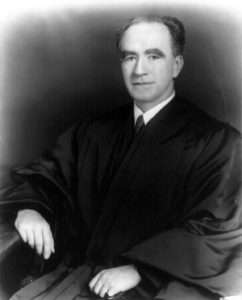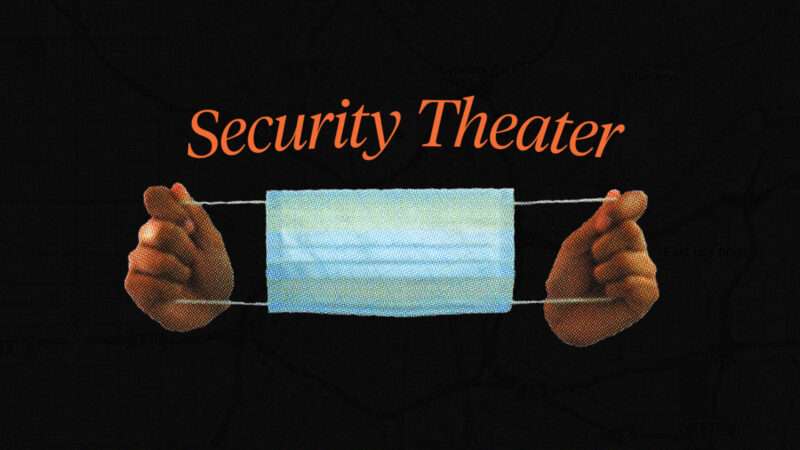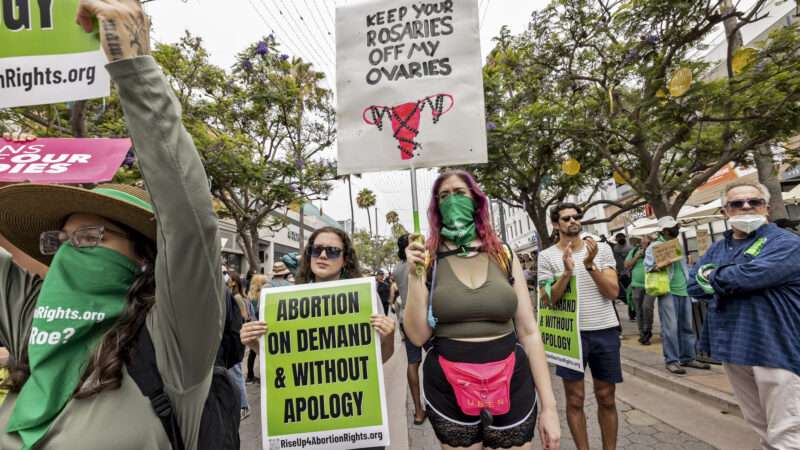[I’m working on a draft article called When Are Lies Constitutionally Protected?, and I thought I’d serialize it here, since I still have plenty of time to improve it; I’d love to hear your thoughts on it! (You can also read the whole article here; all the posts about it will go into this thread.) I began with a brief discussion of constitutionally unprotected lies, and turn here to constitutionally protected ones.]
But some lies, the Court told us, are indeed constitutionally protected—again, not just when they are said without “actual malice,” but even if the speaker knows the statements are false. This includes “false statements about philosophy, religion, history, the social sciences, the arts, and the like,” at least “in many contexts.” (I assume physical sciences would be covered as well.[2]) More broadly, this may include lies about any matters that are not “easily verifiable,” or where “it is perilous to permit the state to be the arbiter of truth.”
Five of the Justices in United States v. Alvarez took this view: Justices Breyer and Kagan in the concurrence and Justices Alito, Scalia, and Thomas in the dissent. And it seems likely that the four Justices in the plurality, who generally took a more speech-protective view than the concurrence or the dissent, would have agreed.
When it came to the lies prohibited by the statute involved in Alvarez itself—lies about having been awarded military decorations—the Justices, put together, appeared to apply intermediate scrutiny. The four-Justice plurality would have applied strict scrutiny, but the swing votes in the concurrence applied intermediate scrutiny, and the three dissenters would have found those lies to be categorically unprotected. But as to lies about philosophy, history, science, and the like, a majority of Justices endorsed categorical protection.
And of course in New York Times v. Sullivan the Court held that “prosecutions for libel on government”—in context, including civil liability for such libel—”have [no] place in the American system of jurisprudence.”[5] That included quite specific allegations, such as claims that the police have arrested Martin Luther King, Jr. seven times. The allegations were not a libel of Sullivan, the Court held, because they weren’t sufficiently “of and concerning him”; and they couldn’t be a libel of the city, because that would constitute an unconstitutional seditious libel claim.
The boundaries of this unprotected zone, however, are not defined, though the recent concern about “fake news” makes those boundaries quite important. Courts are sharply split, for instance, on whether the government may generally punish lies in an election campaign.[6] One court decision has rejected claims of liability for alleged lies about vaccines,[7] but without discussing in detail whether such liability can be upheld on the theory that (to quote Alvarez) it involves “legally cognizable harm associated with a false statement”[8]—in that case, physical injury caused by a person’s believing the false statement.
Of course, the concern about “fake news” and the harms it can cause, both to society broadly and to particular people, is hardly new. Since 2020, many people have condemned false claims of election misconduct on the grounds that those claims damage democracy, and can indeed lead to insurrections.[9] But similar concerns (though not about election results in particular) date back to the debate over the Sedition Act of 1798. Justice Chase’s instructions to the jury in United States v. Cooper, for instance, defended seditious libel prosecutions on the grounds that:
If a man attempts to destroy the confidence of the people in their officers, their supreme magistrate, and their legislature, he effectually saps the foundation of the government.[10]
Likewise, Justice Iredell in Case of Fries (1799) reasoned that the Fries Rebellion happened because “the government had been vilely misrepresented, and made to appear to them in a character directly the reverse of what they deserved.”[11] “In consequence of such misrepresentations, a civil war had nearly desolated our country, and a certain expense of near two millions of dollars was actually incurred, which might be deemed the price of libels.” And this showed that seditious libel prosecutions were necessary:
Men who are at a distance from the source of information must rely almost altogether on the accounts they receive from others…. [If those] accounts are false, the best head and the best heart cannot be proof against their influence; nor is it possible to calculate the combined effect of innumerable artifices, either by direct falsehood, or invidious insinuations, told day by day ….
Such being unquestionably the case, can it be tolerated in any civilized society that any should be permitted with impunity to tell falsehoods to the people, with an express intention to deceive them, and lead them into discontent, if not into insurrection, which is so apt to follow? …
Iredell reasoned that falsehoods “intended to destroy confidence in government altogether, and thus induce disobedience to every act of it” had to be punishable. And the need to punish libel in a republic was especially great
because in a republic more is dependent on the good opinion of the people for its support, as they are, directly or indirectly, the origin of all authority, which of course must receive its bias from them. Take away from a republic the confidence of the people, and the whole fabric crumbles into dust.
Update the language and the examples, and you can see an argument that could easily have been made in 2021.
A similar concern about harmful lies arose during World War I, when the Espionage Act of 1917 made it a crime to, among other things, “wilfully make or convey false reports or false statements with intent to interfere with the operation or success of the military or naval forces of the United States or to promote the success of its enemies.”[15] The Court upheld a conviction under this statute in Schaefer v. United States,[16] reasoning in part that the First Amendment did not extend to “weaken[ing] or debas[ing]” the “morale of the armies” through “question or calumny of the motives of authority.”
The statements about the motivations for the war in the German-language newspaper in that case, the Court held, were “deliberate and wilfully false, the purpose being to represent that the war was not demanded by the people but was the result of the machinations of executive power, and thus to arouse resentment to it and what it would demand of ardor and effort.” And other statements, the Court concluded, deliberately mistranslated a statement by Senator Robert LaFollette: LaFollette had warned of “bread lines” that might happen as a result of the war, but the newspaper rendered this as “bread riots.”
Justice Brandeis, joined by Justice Holmes, didn’t quarrel with the constitutionality of the statute, but concluded that the statute had to be read as limited to
[w]ilfully untrue statements which might mislead the people as to the financial condition of the Government and thereby embarrass it; as to the adequacy of the preparations for war or the support of the forces; as to the sufficiency of the food supply; or wilfully untrue statements or reports of military operations which might mislead public opinion as to the competency of the army or navy or its leaders; or wilfully untrue statements or reports which might mislead officials in the execution of the law, or military authorities in the disposition of the forces.
Reading it more broadly, as he thought the majority did, threatened the First Amendment:
To hold that such harmless additions to or omissions from news items, and such impotent expressions of editorial opinion, as were shown here, can afford the basis even of a prosecution will doubtless discourage criticism of the policies of the Government. To hold that such publications can be suppressed as false reports, subjects to new perils the constitutional liberty of the press ….
And, he reasoned, the rationale would apply in peacetime as well:
In peace, too, men may differ widely as to what loyalty to our country demands; and an intolerant majority, swayed by passion or by fear, may be prone in the future, as it has often been in the past, to stamp as disloyal opinions with which it disagrees. Convictions such as these, besides abridging freedom of speech, threaten freedom of thought and of belief.
Today, I expect that the “no seditious libel prosecutions” holding of Sullivan would preclude arguments such as those in Cooper and Fries, and likely even those as in Schaefer. But those arguments should still be remembered, if only as cautionary tales.
[* * *]
Tomorrow: How can we make sense of the line between punishable lies and unpublishable lies.
[2] Justice Alito’s arguments for protecting speech about the social sciences, quoted in Part III.A below, apply equally to physical sciences.
[5] 376 U.S. at 273–76; see also Rosenblatt v. Baer, 383 U.S 75, 81 (1966) (holding that “the Constitution does not tolerate in any form” “prosecutions for libel on government”).
[6] A few cases have allowed the punishment of such lies. In re Chmura, 608 N.W.2d 31 (Mich. 2000); State v. Davis, 27 Ohio App. 3d 65 (1985). A few more have rejected it. Susan B. Anthony List v. Driehaus, 814 F.3d 466 (6th Cir. 2016); Commonwealth v. Lucas, 472 Mass. 387 (2015); 281 Care Comm. v. Arneson, 766 F.3d 774 (8th Cir. 2014); State ex rel. Public Disclosure Comm’n v. 119 Vote No! Comm., 135 Wash. 2d 618 (1998). See generally William P. Marshall, False Campaign Speech and the First Amendment, 153 U. Pa. L. Rev. 285 (2004); Frederick Schauer, Facts and the First Amendment, 57 UCLA L. Rev. 897, 913–14 (2010); Jonathan D. Varat, Deception and the First Amendment: A Central, Complex, and Somewhat Curious Relationship, 53 UCLA L. Rev. 1107, 1119–22 (2006); Richard L. Hasen, A Constitutional Right to Lie in Campaigns and Elections?, 74 Mont. L. Rev. 53 (2013); Richard L. Hasen, Cheap Speech: How Disinformation Poisons Our Politics—and How to Cure It ch. 3 (2022).
[7] Washington League for Increased Transparency & Ethics v. Fox News, 19 Wash. App. 2d 1006 (2021).
[8] 567 U.S. at 719 (plurality opin.).
[9] See, e.g., Eugene Volokh, Seditious Libel, Today and 225 Years Ago, Volokh Conspiracy (Reason), Jan. 10, 2022, 12:23 pm, https://ift.tt/m8yTqC5 (quoting and discussing Washington Governor’s proposal to criminalize “candidates and elected officials … knowingly [lying] about elections” “for the purpose of undermining the election process or results” when the statements “are likely to incite or cause lawlessness”); Eugene Volokh, Michigan AG’s #DetroitLeaks Takedown Demand, and Seditious Libel, Volokh Conspiracy (Reason), Nov. 10, 2020, 4:52 pm, https://ift.tt/0fp2YVv (quoting and discussing Michigan Attorney General’s letter demanding—on pain of “criminal prosecution”—the removal of materials on the grounds that it “contain[s] false and misleading information pertaining to Michigan elections,” referring to claims about past elections and not details on how to vote in future elections).
[10] United States v. Cooper, 25 F. Cas. 631, 639 (C.C.D. Pa. 1800).
[11] Case of Fries, 9 F. Cas. 826, 1799 U.S. App. Lexis 35, *31 (C.C.D. Pa. 1799). Iredell was defending the Sedition Act of 1798, though Fries wasn’t tried under that Act.
[15] Espionage Act of 1917, sec. 3.
[16] 251 U.S. 466 (1920).
The post When Are Lies Constitutionally Protected?: Unpunishable Lies appeared first on Reason.com.
from Latest https://ift.tt/NLFC5GV
via IFTTT






